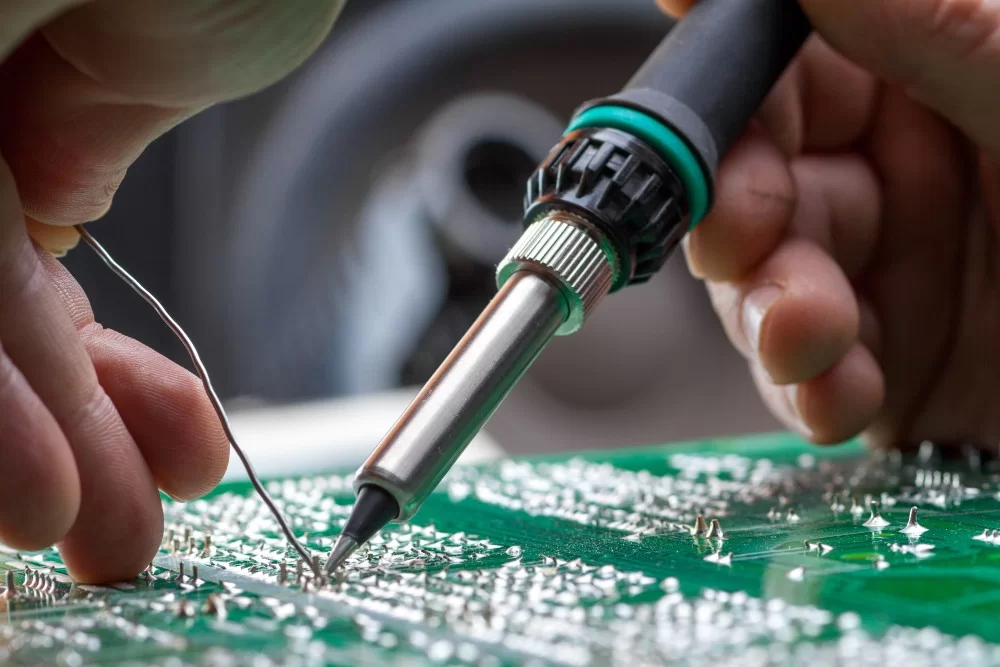How to desolder a circuit board is a task that requires patience and skill, often requiring a significant amount of time and effort. In the process of debugging, repairing electronic equipment, it is often necessary to replace some components. Of course, the premise of replacing components is to remove the original components. If the desoldering method is improper, it may damage the printed circuit board and make the removed but still functional components unusable. Desoldering is more difficult than soldering and requires appropriate methods and tools. Improper desoldering can easily damage components or cause copper foil to peel off, thereby damaging the printed circuit board. Therefore, desoldering techniques are also basic skills that should be proficiently mastered.
The following will detail how to desolder a circuit board correctly, including preparation, steps, common problems, and solutions.
I.Preparation
Before desoldering a circuit board, the following preparations need to be made:
1.Professional tools and equipment
Before desoldering a circuit board, make sure you have all the necessary tools and equipment. These tools may include:
Soldering iron: used to heat solder joints to melt solder.
Solder sucker: used to remove molten solder from solder joints.
Flux: used to increase the flowability of solder and smooth desoldering.How to desolder a circuit board
Hot air gun: used to heat solder joints to melt solder, especially in the case of large components or dense solder joints.
2.Safety measures
When desoldering, always pay attention to safety.This includes:
Wearing goggles and gloves to protect your eyes and hands from heat and solder.
Work in a well-ventilated environment to reduce the risk of inhaling solder fumes and harmful gases.
Place soldering irons and heating equipment such as hot air guns in inaccessible places to prevent accidental contact and burns.

How to desolder a circuit board
3.Determine the disassembly target
Before starting the disassembly, carefully inspect the circuit board and determine the locations and quantities of the soldered connections to be removed. This helps to operate targetedly and reduce unnecessary damage or waste of time.
4.Desoldering techniques
During desoldering, some techniques may help you complete the task more effectively:
Use the appropriate soldering iron temperature: Select the appropriate soldering iron temperature according to the type of solder and the material of the circuit board to ensure that the solder melts smoothly without damaging the circuit board.
Apply moderate pressure: When heating solder joints, apply moderate pressure to the soldering iron to ensure that the solder is in full contact with the solder joint, making it easier to remove solder.
Use flux: Apply a proper amount of flux to the solder joints that need to be desoldered to improve the flowability of solder and the smoothness of desoldering.
5. Cleaning and inspection
After desoldering is completed, promptly clean the residual solder on the solder joints, and carefully inspect the solder joints to ensure that all solder joints are cleaned without residue or damage.
By following these steps and techniques, you can more effectively desolder circuit boards and achieve your repair, recycling, or reassembly goals. Remember, desoldering work requires patience and skill, so do not rush, and try to avoid applying excessive force or overheating to prevent damage to the circuit board.
II.Steps for how to desolder a circuit board
1.Determine solder points:Examine the circuit board carefully and identify the locations and quantities of the solder joints to be desoldered to proceed with the disassembly work.
2.Preheat the soldering iron:Preheat the soldering iron to the appropriate temperature, typically between 300°C and 400°C, to ensure that the solder melts smoothly.
3.Apply flux:Apply a sufficient amount of flux to the solder joints that need to be desoldered to improve the flowability of solder and the smoothness of desoldering.
4.Melt solder:Gently heat the solder joints with the preheated soldering iron until the solder melts. During this process,apply moderate pressure to ensure full contact between the solder and the solder joint.
5.Use a solder sucker:After the solder melts, immediately use a solder sucker to remove the melted solder to clean the solder joints.
6.Repeat steps:Repeat the above steps until all solder joints that need to be desoldered are cleaned.
7.Check solder joints: After desoldering is completed, carefully inspect the solder joints to ensure that all solder joints are cleaned without solder residue.
III.Common problems and solutions for how to desolder a circuit board
1.Solder does not melt: It may be due to the soldering iron temperature being too low or poor quality solder. Adjust the temperature of the soldering iron or replace the solder.
2.Solder residue: If there is a lot of solder residue, you can try using a hot air gun or solder remover to clean it.
3.Damaged circuit board: Be careful when disassembling to avoid applying excessive force, which may damage the circuit board. Use a lower power soldering iron and avoid prolonged heating.
IV.Conclusion
How to desolder a circuit board requires skill and experience, but as long as you follow the correct steps, you can effectively complete it. When desoldering, always pay attention to safety and operate carefully to ensure smooth progress and avoid damaging the circuit board. I hope the steps, tools, and techniques provided in this article can help you successfully desolder circuit boards and achieve your repair or recycling goals.
Desoldering circuit boards is a common step in electronic repair, recycling, and reassembly, involving the removal of soldered connections from the circuit board. This task may require some professional knowledge and skills,but once you learn the correct methods, you can effectively disassemble circuit boards, whether for repair or recycling purposes.